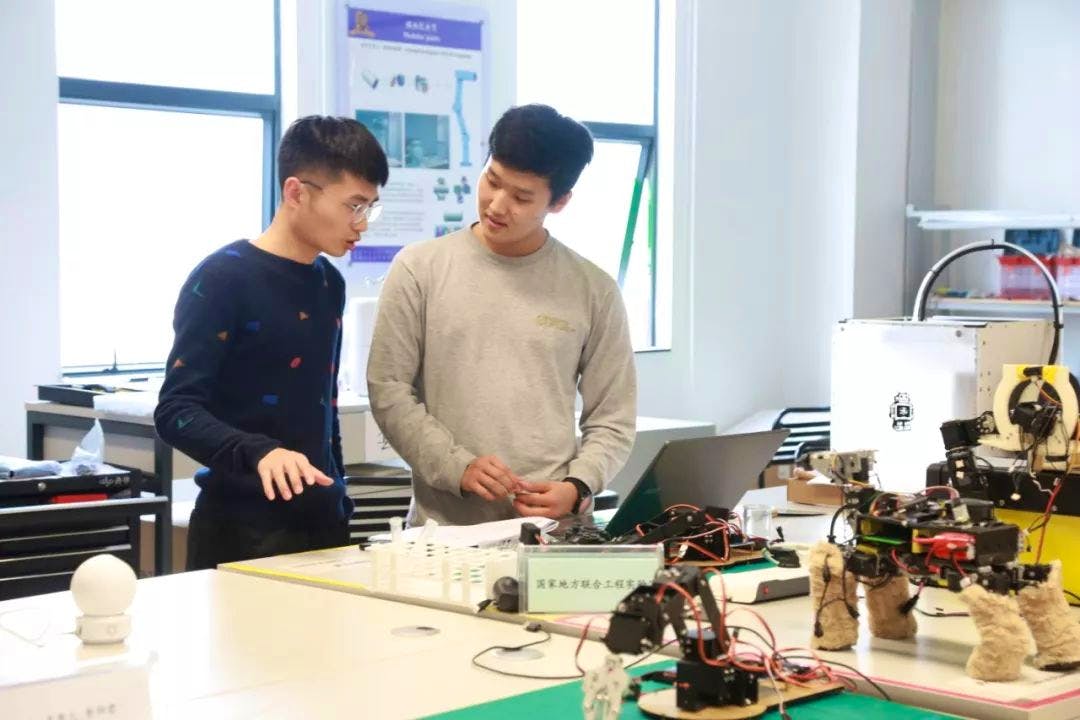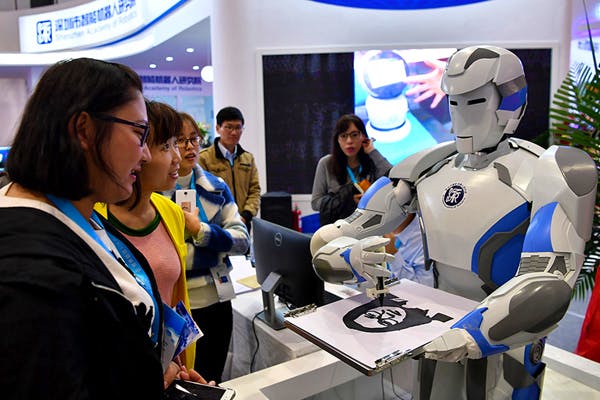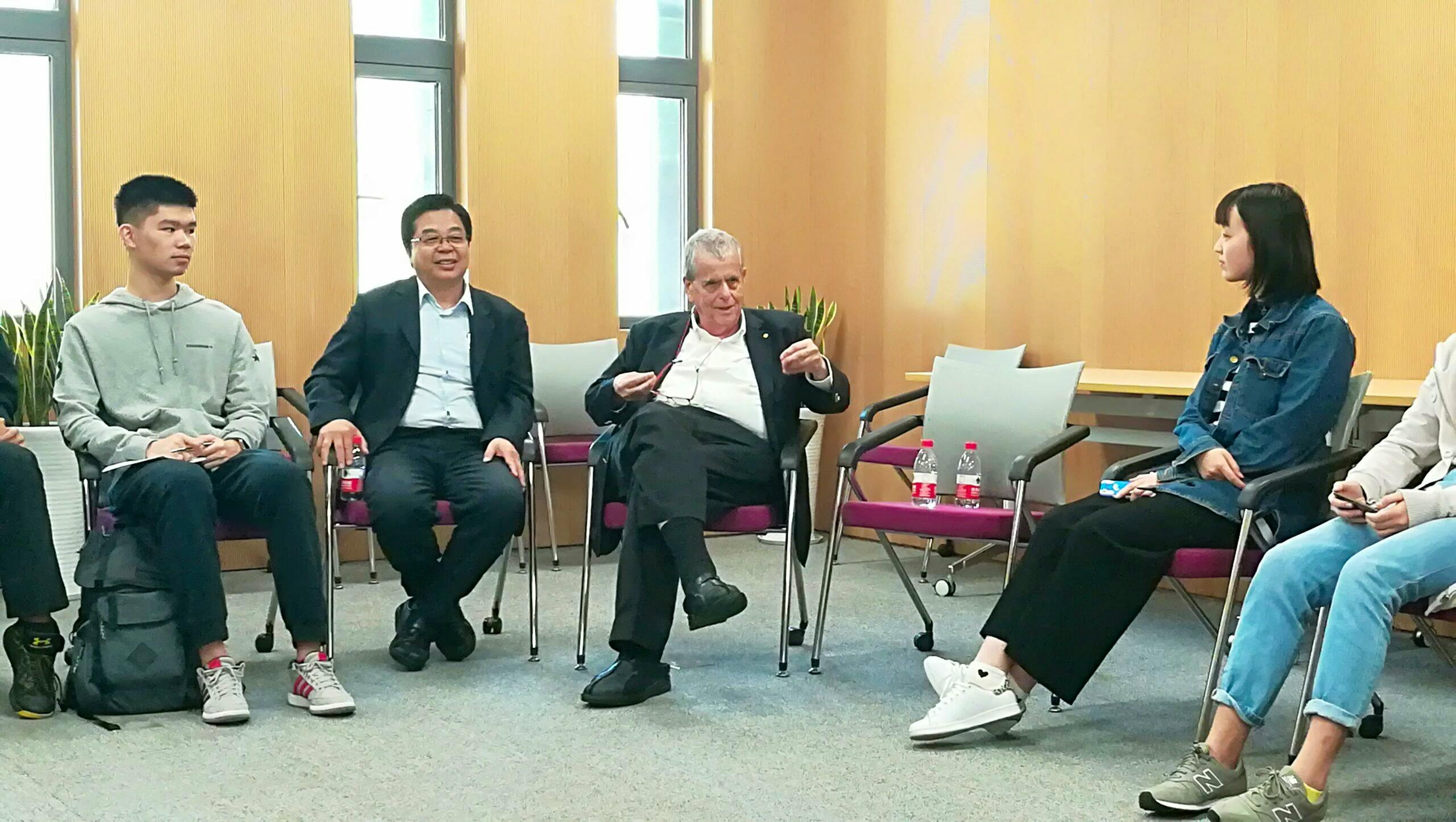Science, Technology, Engineering, and Mathematics (STEM) are some of the fastest-growing, highest-paying, and most popular fields for students to study at university. But forget about Silicon Valley: China is already leading the STEM world in innovation, funding, and services for students. To prepare for a groundbreaking career in any of the myriad industries associated with these fields, China is the place to be.
High-tech university research facilities
The future of STEM is only as good as its students. The Chinese higher education system is one of the fastest-growing systems in the world, with government investment in quality education through the Double First Class University plan, among other local investments, increasing each year. Universities in tech hubs like Shenzhen offer students high-quality labs and research facilities, with all the newest technology and access to incredible opportunities. One world-class university leading the way is The Chinese University of Hong Kong, Shenzhen (CUHK-Shenzhen), which offers unparalleled study opportunities for STEM students with all classes taught in English in an international environment. Universities like this host some of the world’s leading research and science facilities, offering students the chance to immerse themselves in cutting-edge research being conducted. These include:
- Shenzhen Institute of Artificial Intelligence and Robotics for Society (AIRS), funded primarily by CUHK-Shenzhen, is focused on fostering global research in AI and Robotics. AIRS has 12 different research centers in areas like Computer Vision, the Internet of Things and Smart Cloud, Healthcare Robots and Micro-Nanorobotics.
- The Shenzhen Research Institute of Big Data (SRIBD) is a top research facility located on the campus of CUHK-Shenzhen. The institute is a leader in information processing, data analysis and industrial cooperation. SRIBD offers unique benefits to CUHK-Shenzhen postgraduate and undergraduate students, who can work directly on research projects in areas such as big data, future communications, green transport, and intelligent cities.
- Warshel Institute for Computational Biology and Kobilka Institute of Innovative Drug Discovery of CUHK-Shenzhen aim to rigorously develop biology and pharmacy professionals for Shenzhen, China, and the world. Students at these world-class research centers will be pursuing industry-university collaboration and obtaining innovations and breakthroughs in pharmaceutical production.
- The Ciechanover Institute of Precision and Regenerative Medicine was developed by Professor Aaron Ciechanover, Nobel laureate in Chemistry in 2004. This research institute focuses on precision medicine for the diagnosis and treatment of cancer and infectious disease and regenerative medicine for stem cell-based treatment of stroke, Parkinson’s, Alzheimer’s, and more.
- Tech and design students can bring their innovations to life in CUHK-Shenzhen’s Maker Lab. As a “maker,” students can push their creative limits using the latest technology like UGV, UVA, laser cutting machine, 3D printing, thermal imager and mini metal lathe.

World-leading innovation hubs
Many Chinese cities have established high-tech districts where STEM work flourishes. However, the best example of technological innovation in China is Shenzhen. Located next to Hong Kong in southern China, Shenzhen is famously known as the “tech hub” of China. STEM students flock to this city to study among the best universities and biggest global companies.
Shenzhen’s credentials support the popularity of the city as a top STEM destination. More than half of China’s patents in 2019 came from Shenzhen. The city has the highest GDP per capita of any Chinese city. The pace of technological innovation in Shenzhen is described as “relentless,” and STEM workers have a reputation of working at incredible speed to discover and create! As part of China’s push for R&D investment, Shenzhen is set to invest more than 700 billion RMB ($108 billion USD) into fields like artificial intelligence, 6G, quantum technology, driverless vehicles, and intelligent networks.

Needless to say, STEM students in Shenzhen will have the huge advantage of being on the receiving end of all the new funding and creative energy of the city. The city is surrounded by signs of rapidly developing technology. “China is quite advanced in terms of technology, especially in Shenzhen. For example, you would see electric vehicles everywhere. Even buses in CUHK-Shenzhen use electricity as their power source,” said Indonesian CUHK-Shenzhen student Agnes Valencia, who majors in Electronic Information Engineering.
CUHK-Shenzhen Professor Pooi-Yuen Kam studies wireless Communications and understands the high value the city places on new and trailblazing research. “Because of the need to help the industries, the Shenzhen Municipal Government, as well as the Guangdong Provincial Government, show their support,” he said. “The common areas [they are interested in] the application of AI, wireless communications, networks, and so on.”

Continuous opportunities for students
Students and researchers can pursue and apply for these unique research opportunities offered by the municipal and provincial governments in fields like AI, networks, and more. “Of course, they are also open to new ideas,” Professor Kam said. “It’s up to you to propose. They are open to suggestions. In fact, the more revolutionary or radical your idea, the more attention it might get!”
In addition to the open opportunities for funding offered by local governments, CUHK-Shenzhen provides robust services for STEM students looking to develop in their career field. Students have access to student mentorship, job fairs, and career counseling. From the 2020 cohort of CUHK-Shenzhen graduates who pursued a career after graduating, 75.61% found employment in the World’s Top Five Hundred, Chinese Top Five Hundred, listed companies or transnational enterprises, mostly in China’s elite cities like Shenzhen, Shanghai, Beijing. Major tech firms like Tencent and Huawei were among the top employers, highlighting the prestigious career opportunities available to STEM graduates.

“CUHK-Shenzhen undergraduate programs prepare students mostly for those intending to pursue even higher education,” said Ms Valencia. “They provide training in scientific communication.” With this training, students are well-positioned to access prestigious research opportunities offered by the university and pursue further studies at top institutions. Over 65% of the 2020 graduating class were admitted to global Top 50 universities. With high employment rates and high admissions rates into top institutions worldwide, it is clear that CUHK-Shenzhen’s STEM education is truly world-class and China’s desirability as a destination for STEM work and school is only increasing.
Prizewinning STEM faculty teach across China
Chinese scientists are globally renowned for their contributions to scientific advancement and research. Educated in the world’s top institutions, with an international outlook, and vast experience in the world of STEM, the quality of education Chinese professors offer to their students is on par with any major global institution. Because China’s position in the STEM world is growing ever-more prominent, major researchers and prize-winning scientists have been drawn back to China to participate in its rapid development.
International STEM experts and professors are also drawn to the fertile environment of Shenzhen to advance their own research and train the next generation. Nobel Prize winners and other internationally respected faculty populate the faculty of China’s top STEM universities to pass their knowledge on.
- 10 researchers at the Chinese University of Hong Kong (CUHK) were listed on 2021’s Highly Cited Researchers list, indicating their significant influence in their fields. The 10 include such prestigious faculty as Chairman of the Department of Oncology Professor Tony Mok and School of Life Sciences Professor Po Keung Wong.
- Professor Aaron Ciechanover, Nobel laureate in Chemistry in 2004; Professor Arieh Warshel, Nobel laureate in Chemistry in 2013; Professor Brian K. Kobilka, joint winner of the 2012 Nobel Prize in Chemistry, all have established research institutions at CUHK-Shenzhen and teach the next generation of STEM leaders there.
- Yao Chi-Chih, winner of the Turing Award and an academician of Chinese Academy of Science, is a Distinguished Professor-at-Large at CUHK.
- John Hopcroft, winner of the Turing Award and the Karl V. Karlstrom Outstanding Educator Award, opened the Hopcroft Institute for Advanced Information Sciences and is an Einstein Professor at CUHK-Shenzhen
- Multiple winners of the Chern Prize in Mathematics have teaching careers at Chinese universities: Shiu-Yuen Chung at HKUST; Jiaxing Hong at Fudan University, and Xiping Zhu at Sun Yat-sen University.

The future of R&D is in China
China’s investment in research and development (R&D) hit a record 2.44 trillion RMB ($378 billion USD) in March 2021, and is expected to surpass the US in 2025. Chinese government spending on R&D will cover basic research but will also expand into sectors that will drive the future of technology: quantum information, artificial intelligence, semiconductors, and healthcare. In 2020 alone, the National Natural Science Foundation of China funded some 457,000 projects in STEM fields, and China granted 3.6 million patents.
As China rapidly increases its investment in key scientific fields, STEM students in China can expect world-class research opportunities and high-caliber university facilities to become the norm.
As the world confronts the realities of the climate crisis, China’s STEM sector is stepping up as a leader. The country aims to become a global leader in green technology and environmentally-friendly innovation. Though China is the world’s largest emitter of unsafe emissions, the government has prioritized shifting away from coal and funding eco-tech instead.
Green tech is supported by companies, governments, and educational institutions. Alibaba’s ”City Brain” platform, for example, is used around the world to help reduce traffic congestion and air pollution. In 2018, Chinese battery recycler GEM (the largest in the world!) won the World Economic Forum-sponsored runner up award as a “Circular Economy Multinational.” Studies in new subjects such as New Energy Science and Engineering are helping to drive this growth among the new class of STEM students.

Job prospects in the sector are projected to rapidly expand in the future, and talented international students are in the perfect position to connect China and the world for a greener future.
Apply Now
Technological and scientific development is always advancing. You can advance your own STEM education by applying to CUHK-Shenzhen’s STEM programs right here on China Admissions:
- 8 Ways to Improve Chinese Quickly in A Month! - April 22, 2024
- SUMC Deadline: May 31, 2024 - April 18, 2024
- Learn Chinese in China 2024: Best Chinese Language Programs - April 13, 2024

